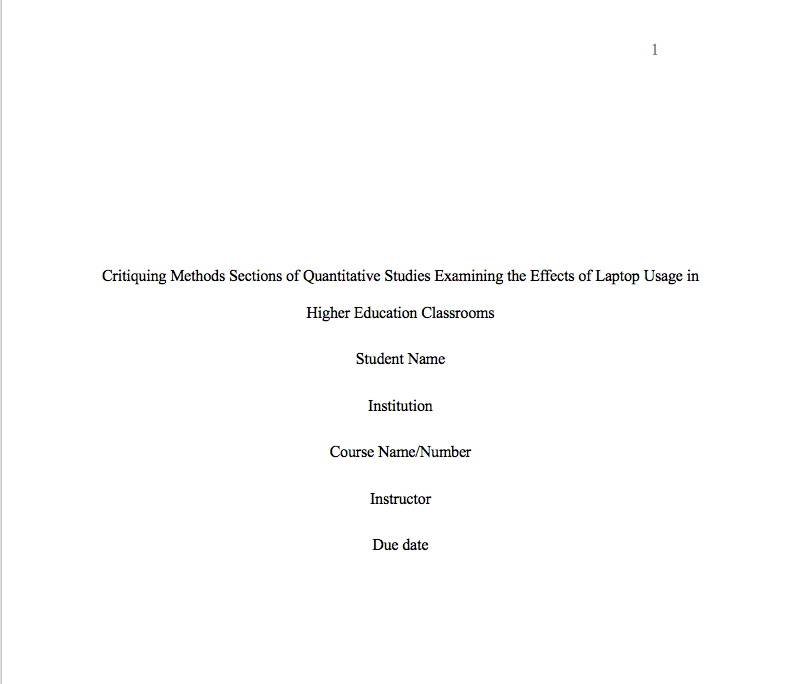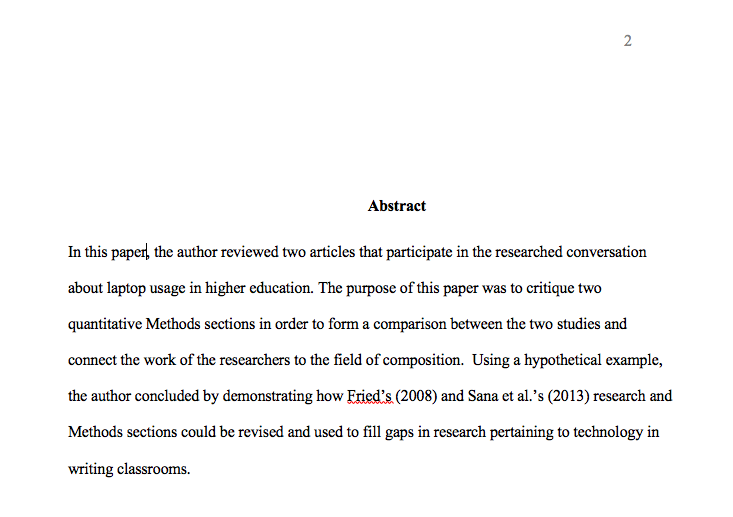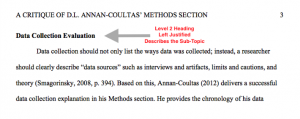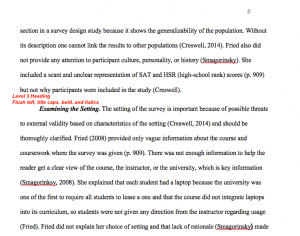12.5 Formatting Your Paper in APA
Melanie Gagich
American Psychological Association (APA)
The American Psychological Association, established in 1892, is “the largest scientific and professional organization of psychologists in the United States” with approximately 117,000 members (Wikipedia). The American Psychological Association created their style guide in 1929 and is most often used in the social sciences such as psychology, education, and linguistics. Scholars in English rarely use APA; however, scholars in the field of Composition and Rhetoric do. For more help with APA please visit the OWL of Purdue’s APA Guide.
The newest edition of APA has included changes related to writing and style. While some of these changes are extensive, it is important to note that the APA “has endorsed the ‘singular they’” (The OWL of Purdue) explicitly in the seventh edition.
Also, the APA includes guidelines for “Bias-free language.” See below for some examples:
- Use “they” as a gender-neutral pronoun instead of “he or she”
- “Use specific labels rather than general ones when possible. For example, ‘cisgender men’ is more specific than ‘men.’ Similarly, ‘Korean Americans’ is more specific than ‘Asian Americans’ or ‘Asians’” (The OWL of Purdue).
- “Instead of broad categories, you should use exact age ranges that are more relevant and specific” (Streefkerk).
Your paper should always use Times New Roman, 12-point font, and one-inch margins. The entire manuscript should also be double spaced.
Formatting the Title Page (page 1)
- Create a Title Page for your work
- Scroll down to the center of the page and center the following:
- Your Name
- Title of Your Paper
- Use title caps
- No quotation marks, italics, underline, etc.
- University Affiliation
- Course Name/Number
- Instructor
- Due Date

Formatting the Abstract Page (page 2)
- Create a new page. This page should include the header (i.e., the abbreviated title of your work) without the words “Running head.”
- Center the word “Abstract” with no bold, underline, or quotation marks.
- Hit enter and do not indent. Write a short (150-250 words) summary of your paper.

Formatting the Beginning of Your Written Content (page 3)
- Create a new page. This page (and all those that follow) should also include the header without the words “Running head.”
- At the top of the new page, center and write the full title of your work. Do not use bold, underline, or quotation marks. After the title, hit enter once, indent your paragraph ½ inch, and begin writing.
Level 1–3 Headings
APA uses various levels of headings to distinguish sections in an essay. According to the OWL of Purdue, “[t]he levels are organized by levels of subordination, and each section of the paper should start with the highest level of heading.” The highest level of heading is 1 and the lowest is 5. However, in this section, only levels 1 through 3 are discussed.
Level 1 Heading
- Level 1 Heading (Centered, Bolded, Title Caps)
- Shows the section title (e.g., Literature Review, Methods, Results, Implications)

Level 2 Heading
- Level 2 Heading (Left-Justified, Bolded, Title Caps)
- Shows subsection titles (e.g., main ideas/topics)

Level 3 Heading
- Level 3 Heading (flush left, title caps, bold, and italics)
- Shows subsections of subsections (e.g., sub-topics of topics)


